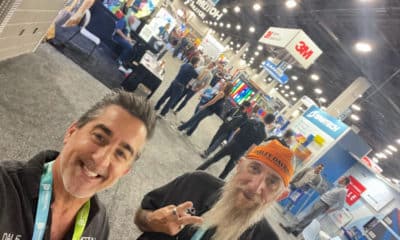I was very pleased when the International Sign Assn. (ISA) and the United States Sign Council (USSC) announced their intent to work together with regard to legislation that affects electronic message centers (EMCs). I believe the entity will be called the EMC Association Group (EMCAG). Consequently, I jumped on it, contacted both parties and journalistically asked for elaboration
on some specific nuggets. A journalist’s desire for instant gratification, I suppose.
Perhaps my reaction should be similar to the conclusion I reached following the 2009 National Signage Research & Education Conference (NSREC), with my editorial about scattering seeds (see ST, December 2009, page 128). It’s not so much the immediate “what” as it is the “what” it might lead to.
I see great synergy potential. USSC’s work with Penn State’s Transportation Institute has produced some great documentation. ISA has access to significantly more resources that can capitalize on what’s already been done. Like an investor linking with
an inventor.
In this age of social media (read Darek Johnson’s “Technology Update” column (Signs of the Times, March 2010, page 14), everything seems to be about networking. So I’m envisioning a common thread.
Getting back to the NSREC, maybe the University
of Cincinnati (UC) can play a part in the EMCAG. What if UC’s Design, Architecture, Art and Planning school added to the Penn State and Tantala Associates’ studies by further documenting that moving-message signs don’t cause traffic accidents? And what if the second UC chair in the School of Business conducted
a study that proved EMCs’ economic benefits for communities?
Tantala’s (see ST, February 2010, page 8) research, funded by the Foundation for Outdoor Advertising Research and Education (FOARE), adds the out-of-home perspective.
What if ISA, USSC and the OAAA all signed off on a single white paper that proved EMCs don’t cause traffic accidents? What if these associations excerpted results from unbiased university studies that empirically supported concepts they know are true? Would that carry more weight than something reported singularly? Early warning signs make you wonder if the Federal Highway Administration’s Wachtel Study had penciled in conclusions before research commenced.
I’m not a fan of social media. But wouldn’t it be great if all of the sign-industry entities were truly LinkedIn? In another editorial (see ST, January 2010, page 128), I recounted some venerable information about the value of trade associations and the need for them to interact and cooperate with each other as enthusiastically as they encourage their individual members to do.
I still think the larger sign industry – out-of-home and on-premise – needs that one document, a white paper perhaps, that provides short synopses of empirically based data that answer incessant questions.
Do signs cause traffic accidents? What is the value
of signs? How big should a sign be? The results of a Tantala, Penn State or Virginia Tech human-factors study could be summated in two to three paragraphs. Each question could have up to a dozen different answers from various formal studies or case studies.
Excerpts from books could be cited as well. The Signage Sourcebook, published in October 2003 by the Signage Foundation for Communication Excellence, remains the premier compilation on the value of signs and sign-related legislation. And, if this and other books cite some of the studies mentioned above and create circular references, all the better.
Speaking of circular references, this brings us back to UC and the NSREC, when Dr. David Edelman, a UC professor, outlined the work of graduate student Joan Christodoulou, who compiled a list of sign-related research, books and articles. This living document should be constantly updated.
Do you see a pattern here? Everything’s already haphazardly connected. The trick is to organize it into an easily digestible format for the outside world and get all inside participating parties to endorse, promote and sign it, like a Declaration of Independence: We hold these truths to be self evident.
All this from little announcement about two associations cooperating on a singular topic? If one seed grows a plant that creates hundreds of other seeds, why not? As Mary Chapin Carpenter sings in a song of roughly the same title, “It’s too much to expect, but it’s not too much to ask.”

 Projects1 week ago
Projects1 week ago
 News1 week ago
News1 week ago
 How To6 days ago
How To6 days ago
 News2 weeks ago
News2 weeks ago
 Real Deal18 hours ago
Real Deal18 hours ago
 News2 weeks ago
News2 weeks ago
 Manager's To Do2 weeks ago
Manager's To Do2 weeks ago
 Dale Salamacha2 weeks ago
Dale Salamacha2 weeks ago












